According to dermatologists, the ideal amount of sunscreen for the face and neck is approximately 1/4 teaspoon, or about the size of a nickel with a diameter of 2cm. For the body, you’ll need about 2-3 tablespoons of sunscreen for comprehensive protection.
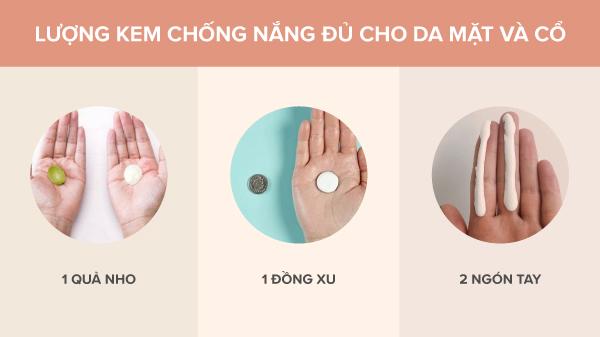
According to experts, the standard dosage for topical sunscreen is 2mg/cm2 of skin area.
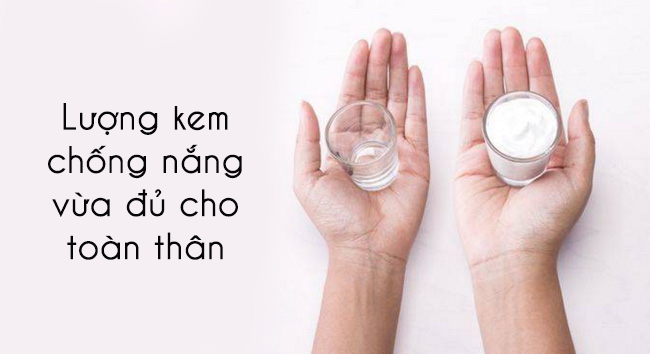
Research from the American Academy of Dermatology (AAD) recommends using “enough sunscreen to fill a shot glass” for the entire body of an adult. This amounts to approximately 30ml.
Why you shouldn’t apply too much sunscreen?
Applying excessive sunscreen not only fails to provide better protection but can also be detrimental to the skin. One common issue is the clogging of pores. Specifically, a thick layer of sunscreen can trap dirt and oil, creating an environment conducive to bacterial growth and leading to acne and other skin problems.
Moreover, overusing products is not only wasteful but can also hinder proper absorption. A thick layer of sunscreen forms a barrier that impedes the penetration of nutrients, resulting in an oily and uncomfortable feel. This also diminishes the effectiveness of other skincare products like serums or moisturizers, as they cannot penetrate deeply into the skin.
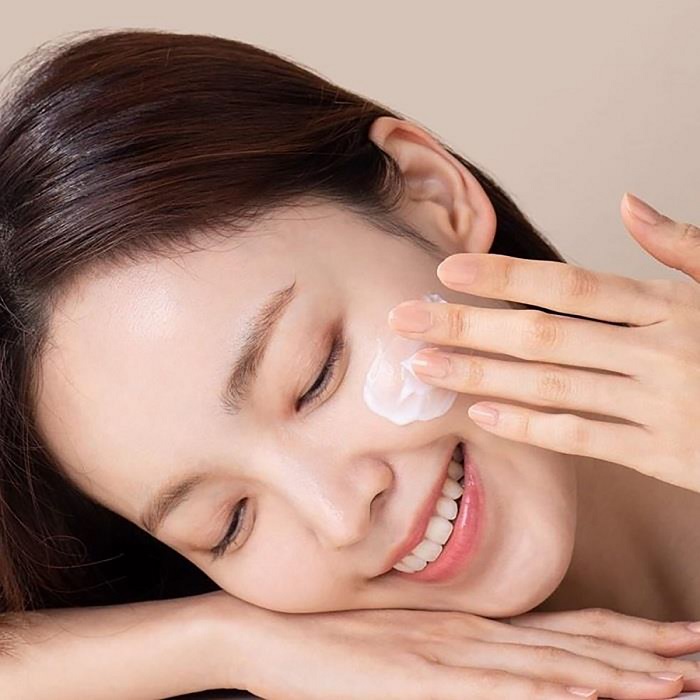
An overly thick layer of sunscreen can clog pores, leading to acne, irritation, and accelerated skin aging.
Notably, studies published in the Journal of the European Academy of Dermatology and Venereology suggest that excessive sunscreen application can impair the skin’s ability to absorb vitamin D. Vitamin D is essential for skin health, maintaining elasticity, and protecting against harmful agents. Therefore, applying the right amount of sunscreen not only shields against UV rays but also ensures the skin receives the necessary nutrients.
What does “enough” look like?
To effectively protect your skin, it’s not about applying a copious amount of sunscreen but rather using the right amount and applying it correctly. Firstly, choose a sunscreen suitable for your skin type. For oily skin, opt for gel, lotion, or spray formulations to control excess oil and prevent pore congestion. Conversely, dry skin will benefit from creams or milks that provide necessary hydration.
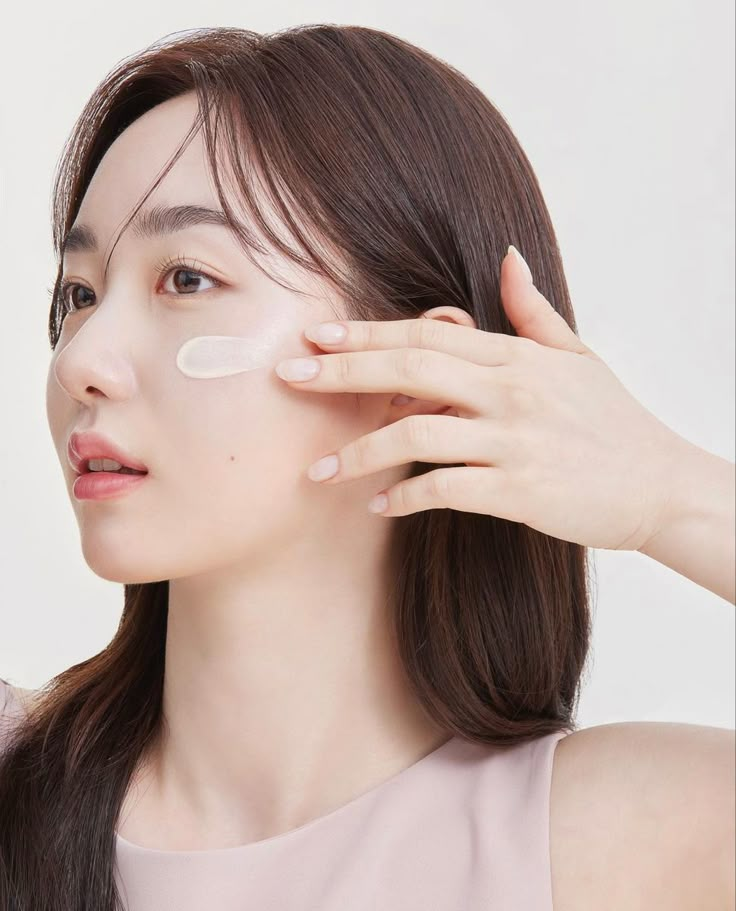
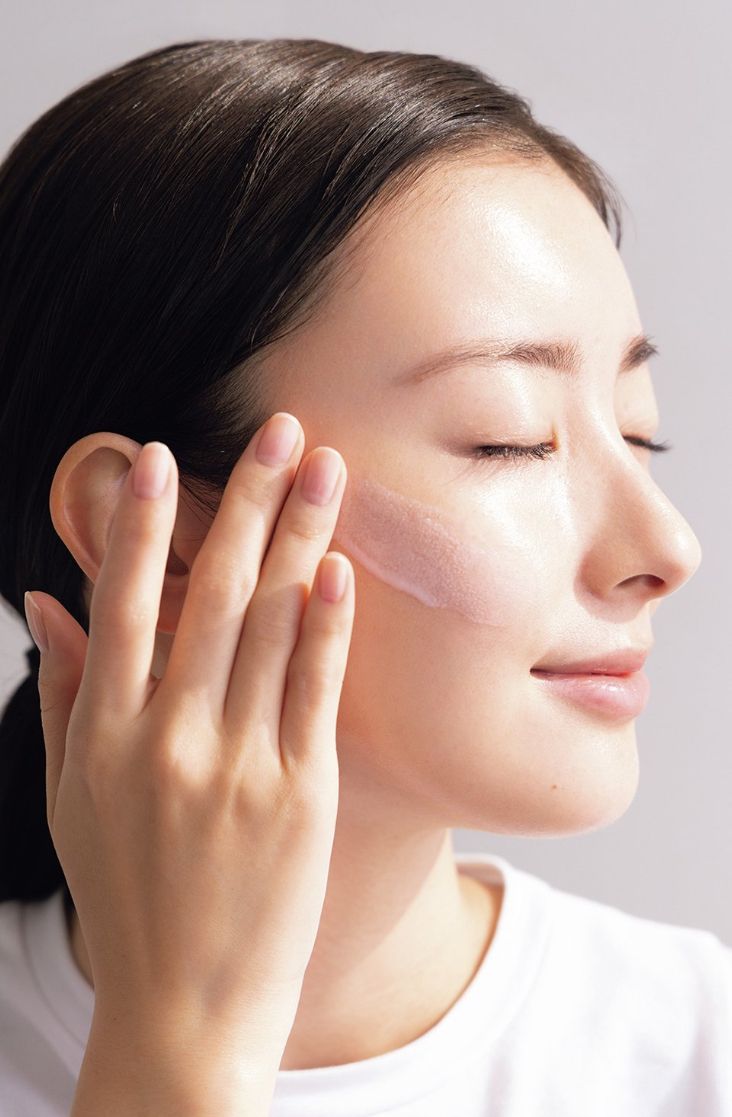
Dermatologists recommend that for optimal skin protection, it’s crucial to choose and use sunscreen wisely.
Next, prioritize broad-spectrum sunscreens that shield against both UVA and UVB rays. UVA rays cause skin aging, while UVB rays are responsible for sunburns. By using broad-spectrum protection, you ensure your skin is guarded against both types of radiation.
To maximize the effectiveness of sunscreen, apply it 15-20 minutes before going outdoors. This allows the sunscreen to absorb into the skin and form a protective barrier. Additionally, reapplication is essential every 2-3 hours, especially after swimming, sweating, or wiping your face.

Reapplication is crucial, especially during outdoor activities, as sweat, water, and friction can remove the protective layer of sunscreen.



































